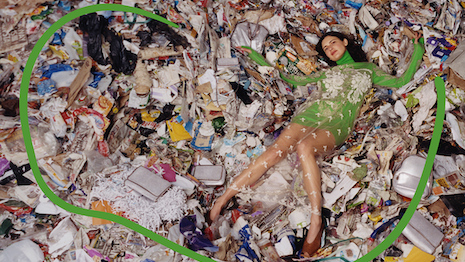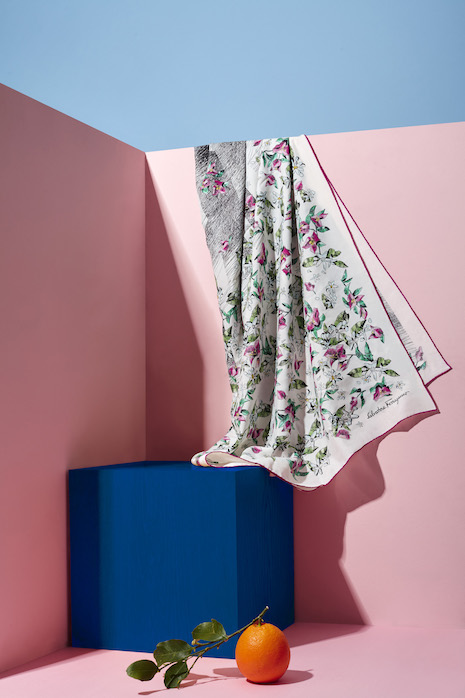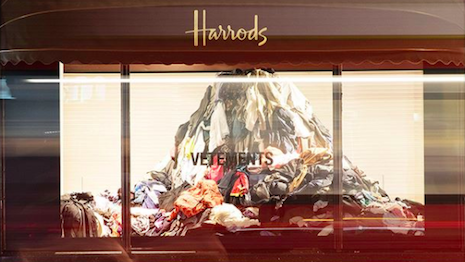 What happens to fashion after its lifespan is one of the industry's biggest issues. Image credit: Stella McCartney
What happens to fashion after its lifespan is one of the industry's biggest issues. Image credit: Stella McCartney
While luxury labels are among the fashion industry’s frontrunners in sustainability, these companies are facing challenges to achieve additional progress and impact. A new report from the Boston Consulting Group and the Global Fashion Agenda finds that luxury brands improved their sustainability performance in the past year. Despite improvements in the overall fashion industry’s sustainability, the report notes that there is still room for improvement.
“I’m excited that sustainability finally has been taken out of the lab and into the boardroom," said Morten Lehmann, chief sustainability officer at GFA, Copenhagen. "To find out that the topic influences decision-making at a strategic level leaves me with optimism.”
Sustainability benchmarks
Overall, the fashion industry received a Pulse score of 38, up from 32 last year. Both small and large luxury players outperform the index average at 51.
 Ferragamo developed fabric out of orange fiber. Image credit: Ferragamo
Fashion is a wasteful industry, with only 25 percent of clothing being collected after its lifespan ends. Some fashion frontrunners are looking to change this pattern of discarding.
In honor of Earth Day, fashion label Stella McCartney and secondhand marketplace The RealReal teamed up to promote more sustainable buying habits.
Expanding on their existing partnership (see story), the two have kicked off a multichannel movement aimed at inspiring consumers to buy higher quality items that can have a lifespan after them. Fashion is a significant contributor to landfills, with the average U.S. consumer discarding 70 pounds of textiles per year, calling for a change toward more mindful consumption (see story).
Ferragamo developed fabric out of orange fiber. Image credit: Ferragamo
Fashion is a wasteful industry, with only 25 percent of clothing being collected after its lifespan ends. Some fashion frontrunners are looking to change this pattern of discarding.
In honor of Earth Day, fashion label Stella McCartney and secondhand marketplace The RealReal teamed up to promote more sustainable buying habits.
Expanding on their existing partnership (see story), the two have kicked off a multichannel movement aimed at inspiring consumers to buy higher quality items that can have a lifespan after them. Fashion is a significant contributor to landfills, with the average U.S. consumer discarding 70 pounds of textiles per year, calling for a change toward more mindful consumption (see story).
 Vetements demonstrated fashion's waste problem with windows at Harrods. Image credit: Harrods
While sustainability makes sense for people and the planet, it can also have an impact on businesses’ bottom lines. The report finds that if sustainability activities are put in place, brands can raise their EBIT by 1 to 2 percentage points by 2030.
Brands can also save on energy costs with more efficiency put into their operations, such as installing LED lights in stores.
Along with other frontrunners, luxury players are seeing less return on their sustainability efforts. The report suggests that brands collaborate with others in the industry to drive further sustainability.
Systemic change is needed throughout the industry to create broad change in aspects such as raw materials.
Communication and commitment
One of the most important factors in achieving sustainability goals is support from senior management. Additionally, internal communications reinforcing the company’s commitments and reports detailing progress with stakeholders can be a driving force in succeeding.
The report notes that many companies hold off on sharing information about their efforts until they have achieved a perfect result. However, it is better to provide updates along the journey.
Traceability and transparency are also key at assuaging consumer concerns about the supply chain.
A recent report found that a number of luxury fashion labels disclose little to no details about their supply chain, environmental and social policies, leaving room for more transparency in the industry.
Dior, Max Mara and Longchamp are among the brands that received low scores on Fashion Revolution’s Fashion Transparency Index, which analyzes publicly accessible information. As consumers desire more details about the origins of the products they buy, transparency is a key component to winning and keeping their business (see story).
Vetements demonstrated fashion's waste problem with windows at Harrods. Image credit: Harrods
While sustainability makes sense for people and the planet, it can also have an impact on businesses’ bottom lines. The report finds that if sustainability activities are put in place, brands can raise their EBIT by 1 to 2 percentage points by 2030.
Brands can also save on energy costs with more efficiency put into their operations, such as installing LED lights in stores.
Along with other frontrunners, luxury players are seeing less return on their sustainability efforts. The report suggests that brands collaborate with others in the industry to drive further sustainability.
Systemic change is needed throughout the industry to create broad change in aspects such as raw materials.
Communication and commitment
One of the most important factors in achieving sustainability goals is support from senior management. Additionally, internal communications reinforcing the company’s commitments and reports detailing progress with stakeholders can be a driving force in succeeding.
The report notes that many companies hold off on sharing information about their efforts until they have achieved a perfect result. However, it is better to provide updates along the journey.
Traceability and transparency are also key at assuaging consumer concerns about the supply chain.
A recent report found that a number of luxury fashion labels disclose little to no details about their supply chain, environmental and social policies, leaving room for more transparency in the industry.
Dior, Max Mara and Longchamp are among the brands that received low scores on Fashion Revolution’s Fashion Transparency Index, which analyzes publicly accessible information. As consumers desire more details about the origins of the products they buy, transparency is a key component to winning and keeping their business (see story).
“The impact goes beyond brand building and risk management," said Sebastian Boger, a partner at BCG, Munich. "Sustainability can actually increase profitability for fashion companies.”
